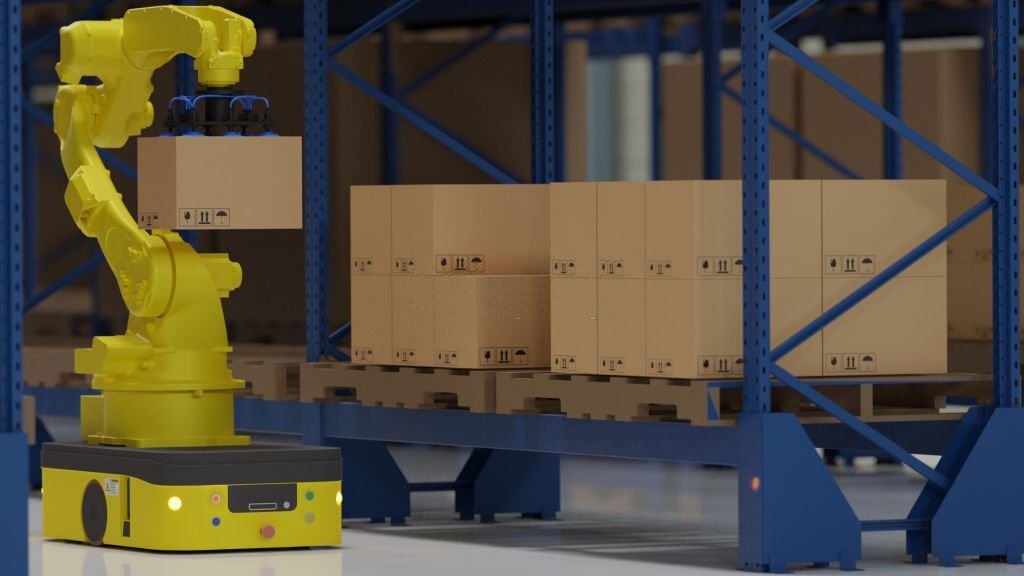
Efficient material handling is crucial across industries, including construction, manufacturing, and logistics. Heavy equipment plays a vital role in these operations, ensuring the efficient movement, storage, and transportation of materials. In this article, we explore some examples of heavy equipment used in material handling tasks. From forklifts that enable precise lifting and movement to cranes that handle heavy loads, conveyor systems that facilitate continuous transportation, and loaders that handle bulk materials, we delve into the functions and applications of this machinery in various material handling operations.
I. Forklifts :
Forklifts are versatile and commonly used in material handling tasks. Key examples include:
- Counterbalance Forklifts: These forklifts feature a counterbalance weight at the rear, allowing them to lift and transport loads without requiring additional support. They are used for indoor and outdoor operations, such as loading and unloading trucks, stacking pallets, and moving materials within warehouses.
- Reach Trucks: Reach trucks are designed for narrow aisle operations. They have extendable forks and the ability to reach higher storage racks, maximizing warehouse space utilization. Reach trucks are used in high-density storage facilities and distribution centers.
II. Cranes (400 words):
Cranes are heavy-duty machines used for lifting and moving heavy loads. Examples of cranes used in material handling include:
- Mobile Cranes: Mobile cranes are versatile machines mounted on trucks or crawlers. They have telescopic booms and are used in construction sites, industrial yards, and shipping ports for lifting and placing heavy objects or equipment.
- Overhead Cranes: Overhead cranes are fixed to overhead beams or rails, allowing them to traverse the length of a facility. They are commonly used in manufacturing plants, warehouses, and shipyards for lifting and moving materials within defined areas.
III. Conveyor Systems :
Conveyor systems are automated machines used for the continuous movement of materials. Examples include:
- Belt Conveyors: Belt conveyors consist of a continuous loop of belts used to transport bulk materials, packages, or parts. They are used in various industries, including mining, manufacturing, and logistics, for efficient movement of goods over long distances or between different levels.
- Roller Conveyors: Roller conveyors use a series of rollers to move materials. They are commonly used in warehouses, distribution centers, and production lines to transport packages, pallets, or heavy items.
IV. Loaders :
Loaders are heavy equipment used for loading loose materials into trucks, hoppers, or storage containers. Examples include:
- Wheel Loaders: Wheel loaders, also known as front-end loaders, are equipped with a wide bucket on the front for scooping, lifting, and loading loose materials, such as gravel, sand, or soil. They are commonly used in construction, mining, and agricultural operations.
- Skid Steer Loaders: Skid steer loaders are compact machines with a small turning radius. They are equipped with a bucket or attachments for various material handling tasks. Skid steer loaders are used in tight spaces, such as urban construction sites or landscaping projects.
Conclusion:
Efficient material handling is essential for smooth operations across industries. Heavy equipment plays a significant role in facilitating these tasks, ensuring the safe and efficient movement of materials. Forklifts enable precise lifting and movement within warehouses and distribution centers. Cranes handle heavy loads and provide vertical lifting capabilities in construction sites and industrial yards. Conveyor systems facilitate continuous transportation of materials over long distances or within defined areas. Loaders are essential for loading loose materials into trucks or containers. By utilizing these examples of heavy equipment, industries can enhance efficiency, productivity, and safety in material handling operations. Whether it’s the precise lifting of forklifts, the heavy lifting capacity of cranes, the continuous transportation of conveyor systems, or the loading capabilities of loaders, each machinery type serves a unique purpose in efficient material handling.

